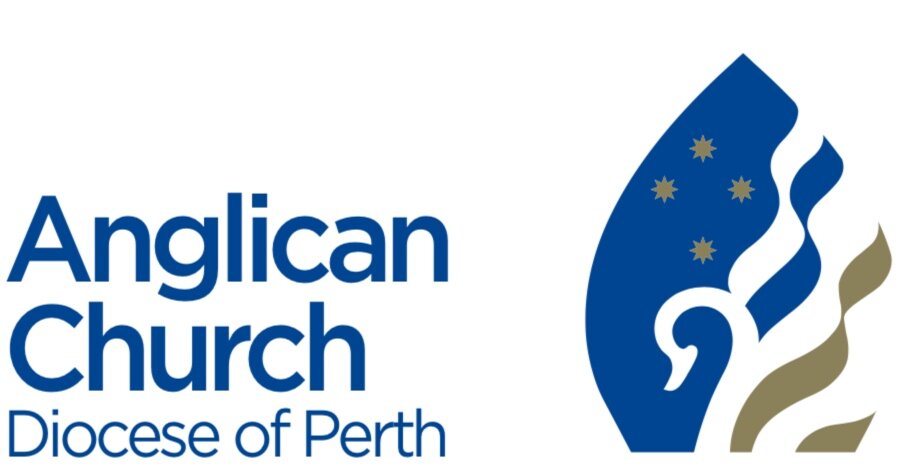Today we are assured that not only did Christ rise, breaking the power of death, but in that rising he rose for us all, churched and unchurched people alike. We are assured that Christ’s victory over death means that we too, through the grace of God, may also rise from the grave. That we too are the centre, the focal point of God’s love to such an extent that She will bring us, through Christ, by the power of the Holy Spirit into eternal life.
This is the cornerstone of our faith. And today, this faith in the risen Christ, the one who died within time so that all may eternally live beyond time, will be proclaimed by millions across the world.
And yet, our Gospel reading today causes us to pause, since it both affirms this faith and offers us a challenge or an invitation to enter deeper into the mystery, into the unknown and therefore into God. It asks us to examine belief and faith themselves.
Attending to the reading, we notice that the two disciples, upon entering the tomb of Jesus, see the absence of his body. This may, as Mary thinks, be the work of other people, perhaps grave robbers. The disciples however also see the head cloth neatly rolled, or in the original Greek “folded up”, by itself, apart from the other wrappings. This care and consideration is something a grave robber would never do.
Some other, some divine power has been at work. And so, as the text states the disciple “saw and believed”.
But, the text goes on in a somewhat confusing fashion, “for as yet they did not understand the scripture, that he must rise from the dead.”
And here is the crucial bit. What do Peter and the other male disciple, having believed do? They go home.
The wording here is interesting. By context the Greek does mean return to their own homes, their own separate homes, or return to where they were staying. The literal translation is something like “return to their …” the homes or places are added only by context.
This is clearly a return in the sense that at the end of the action, there is nothing new. Nothing has changed. The beloved disciple has seen, has believed, and returns home.
And this is the way it can be with faith, our faith. We can believe, we can affirm the faith of the church, we can accept the propositions and the doctrine – and we can go home, go home to ourselves, without anything, without our lives, changing very much at all.
Our scripture today offers a different way, a way taken by Mary not the male disciples.
“For as yet they did not understand the scripture, that he must rise from the dead.”
Belief is one thing but understanding is another. And the Greek word used here for “understanding” also means to be aware, to behold, to perceive, and to know. We can believe or we can believe and know. This is knowledge of, not knowledge about.
We can read book after book about Iceland, we can study courses on Icelandic history and culture and we may know a lot about Iceland. But we will not know Iceland, we will not understand Iceland until we encounter and experience the country personally.
And so it is with faith. We can know of the Risen Christ … or we can know the Risen Christ.
Our Gospel today, invites us to a faith that is based on understanding, on knowing – a faith that means we stay at the empty tomb, not return home to ourselves with nothing changed.
This faith is not simply affirming a set of statements or a doctrine. It is not simply confidence that we somehow know what would have been recorded on video if there had been a drone with a camera flying over the head of Jesus two thousand years ago.
Faith is far more than asserted knowledge.
It is informed by our scripture, our traditions, our reason and the personal touch of the divine, through prayer and other means of encounter.
Our faith is strengthened through years of struggle and pain, connection and joy – attending to the sacrament, responding to liturgy and hymns, sitting next to and joining with people we may not particularly like, but are commanded to love.
Our faith is formed through church fetes, study programs, innumerable charity drives, holding the hands of the sick, getting up early on a cold winter’s morning because we are rostered to make the tea. It is formed through countless acts of selfless service, the majority of which appear to be unseen and unacknowledged.
And this formation creates a faith that understands and knows God, because God is found in and as the people we sit next to, the people we make the tea for and the people we hold as they are sick and as they die.
This formation creates a faith that is more solid and sturdier than anything on earth, a faith that is stronger than death, because it is formed in Christ, who once was dead but now lives forever.
This is a faith that, when sighting Christ’s empty tomb, would not lead us home, this is a faith that prepares us for the divine encounter, as it did with Mary.
This is the faith we are called to live.
Mary embodies this faith and what may bring us to this faith. Having gone to the tomb alone, she announces to Peter and the other disciple, “They have taken the Lord out of the tomb, and we do not know where they have laid him.”
By the use of “we”, even though she is alone, Mary vocalizes communal concern. Her identity is interconnected with the other disciples, with the people. This interconnection, this concern, this love is exactly that which forms the deep and lived faith we are called to. A faith of the “we” not the “I”.
And yet, Mary is is not self-less, some sort of group-think robot: when she is questioned by the angels, she replies: ‘They have taken away my Lord, and I do not know where they have laid him.’ Her personal grief is palpable.
Mary is both herself and the community, the individual and the group.
And what does she do when the disciples leave, back to their homes, back to themselves? She remains there weeping, she stays with her grief.
She does not, unlike the disciples, enter the tomb, but remains respectfully outside in her grief and looks inside. There she sees the two angels, one at the head and one at the foot of where the body of Jesus had been lying. They are enclosing the empty space, the shape, the absence, of where Jesus once was.
Mary’s grief is the type of grief we all know. When the absence of a loved one, the aching loss of them, becomes a presence in and by itself. Though they are no longer with us, their absence is. Though we cannot see their body any longer, we are keenly aware of the space they would have once taken up within our lives and homes.
Mary has fully accepted the loss of Jesus, she is fully with her grief and her pain, her vision full of the absence of the Lord. She has nothing, for there is nothing to have, not even a body.
And yet … out of that nothing, from within that absence there appears Jesus – for our God is a living God who creates from nothing, who brings into existence that which does not exist and that which once existed.
And we too like Mary, if we attend fully, if we stay with the grief in our life, will find at some point the nothing becomes something, the absence becomes a presence, the dead weight grief giving way to the light of life - and the living God comes to us.
But we may not recognize the divine one; we may think they are the Gardener, or the person on the pew next to us, or the people we make tea for, or the member of the church who kind of gets on our nerves. But again, like Mary if we engage with them honestly, bringing to them our real selves, they will see us, they will recognize us and will call us by name.
And so this is how we may have faith in the resurrection – through a restored life now, not at some future time, through the divinity of human grief, holding and contact, through encounter with those who call us by name.
And in that way, like Mary who stayed and grieved and was healed, restored to her own life, may we also be able to announce, be able to proclaim boldly this Easter and every day “I have seen the Lord!”
Amen.

